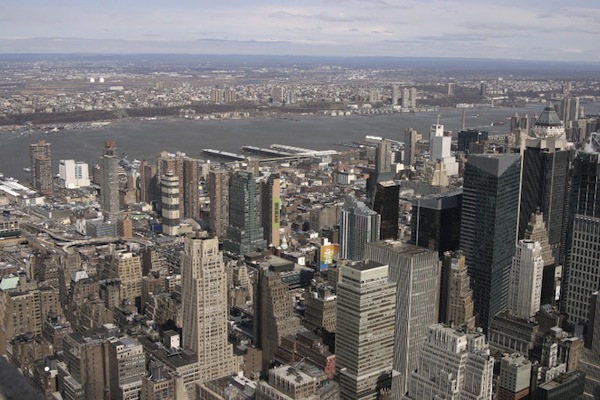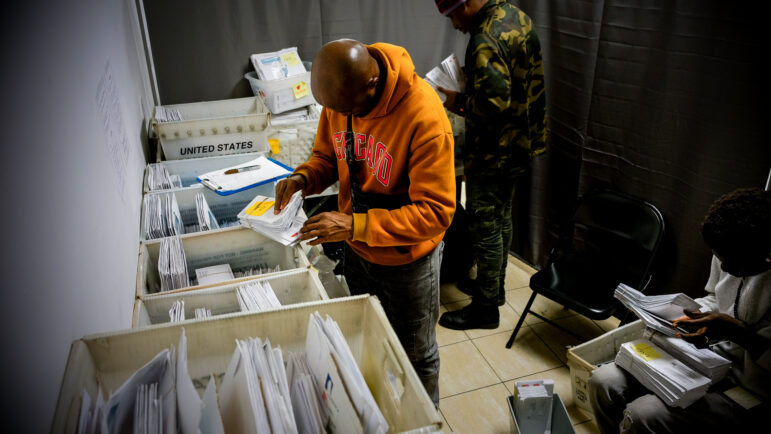
Photo by: Nadavspi
The city’s 1961 zoning rules may have allowed for 12 million residents. But it’s unclear whether and where that capacity really exists, and how rezonings since then have altered it.
When Mayor Bloomberg began promoting PlaNYC in 2006, he began with a prediction: that New York City would add 1 million residents between the years 2000 and 2030. The reason the city needed to get more sustainable—and the justification for permitting increased residential development in neighborhoods that didn’t want it—was to accommodate that larger population.
Some critics have questioned the plausibility of that prediction; Queens College demographer Andrew Beveridge has pointed out that hitting the 9 million-person mark will require the city to grow faster in the next 20 years than it did from 1940 to 2000.
But if Census estimates are accurate, the city (2009 population 8,391,881) has already grown by about 380,000 since 2000. Let’s say the other 600,000-plus people that the predictions say are coming do arrive (or stay: the city’s population growth is composed both of newcomers and incumbent residents who opt not to move out): How will the city accommodate them?
NYU’s Furman Center estimates that the city’s rezonings since 2002—which encompass 18 percent of the city—have created enough new residential capacity to house 200,000 additional people. That raises the possibility that several more rounds of rezoning might be necessary to house the city of 9.1 million that is expected two decades from now.
But exactly how much room the city has or needs is unclear. The new zoning might offer less capacity than estimated. At the same time, older zoned areas might have more room that is thought. And illegal conversions— in a pilot crackdown earlier this year, city inspectors visited 62 properties and found that 54 were not legal apartments —create a whole class of resident s who appear to be housed but are not housed properly.
“One of the claims that you often hear is that the city was zoned [in 1961] for 12 million people. We really don’t know whether that’s true or not,” says NYU professor and Furman Center director Vicki Been. “We don’t know exactly how much unused space there is and how realistic that space is. It’s an incredibly difficult set of questions.”
Of course, it’s not as though population growth will stop in 2030. According to a recent report from the Urban Land Institute, “Beyond the broadly acknowledged countries China, India and Brazil, the United States stands out as the only industrialized country that will increase its population by another 30 percent in the coming decades,” with a 130-million-person increase in the country’s metropolitan areas, which already house 250 million Americans, by 2050.
The only time in New York’s history when it didn’t grow was during the near-death experience of the 1970s, so growth is widely considered to be a good thing. But is it a good thing forever? “Maybe there is a point where we say maybe the city shouldn’t grow any longer,” suggests Pratt professor Ron Shiffman.
The RPA’s Bob Yaro says at 25 million to 30 million people, a metropolitan region starts seeing “diseconomies of scale begin to outweigh the economies of scale.” Right now, the New York metro region is at around 20 million. But Yaro is confident that by creating secondary metropolitan centers—so that Manhattan south of 96th Street is the daily destination for a smaller share of the region’s workers—the New York region could potentially grow beyond the 30 million mark. He recalls that back in the 1920s, noted urban thinker Lewis Mumford sharply disagreed with the RPA’s calls for planned growth. “He said New York was simply going to collapse from overdevelopment and overdensity,” Yaro says. “It didn’t quite happen that way.”
Of course, accommodating a larger New York is more than a physical challenge. It’s a political and economic one as well. The Urban Land Institute predicts that as urban populations grow in the next 50 years, “the chasm between the better off and the less well off will increase within local communities, regions, states, countries and continents. Left unchecked, enormous tension and great conflict will arise.”
Beyond the next half-century, population projections get shakier: The United Nations has estimated that in the year 2300, world population could hit 36 billion or drop to 2.3 billion, less than it was in 1950. The mid-range estimate is for a world of about 8.9 billion people.








